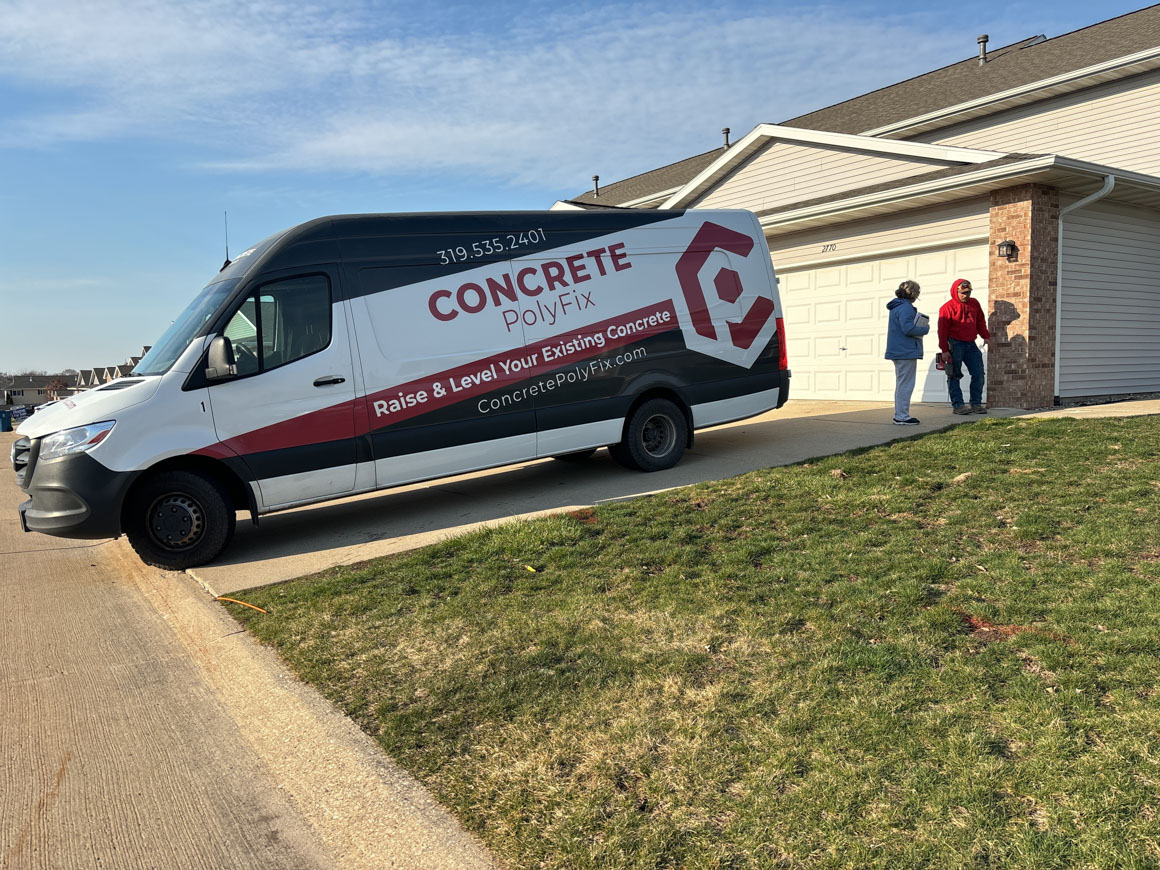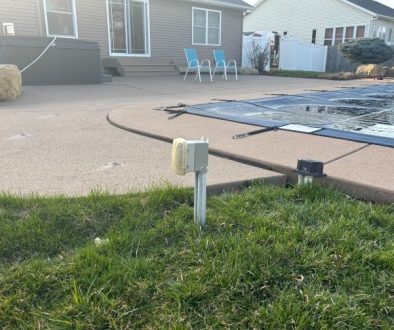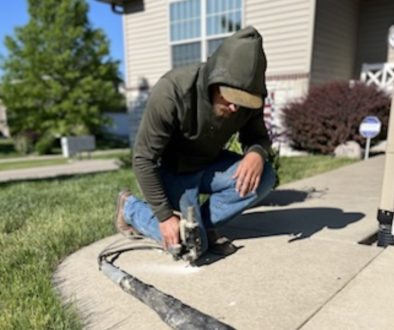How to Prevent Driveway Settlement and Cracking
As a homeowner, maintaining your driveway is crucial not only for aesthetics, but also for safety and longevity. Driveway settlement and cracking are common issues that can lead to costly repairs if not addressed properly.
In Iowa and Illinois, soil conditions play a significant role in driveway settlement. Both states have moisture sensitive soils, including clay heavy black soil and loamy soils that expand and contract with changing weather. These fluctuations cause the ground beneath driveways to shift, leading to cracks, sinking, and uneven surfaces. Understanding why this happens and how to prevent it can help you protect your investment.
Common Causes of Driveway Settlement
- Moisture Sensitive Soil and Weather Conditions in Iowa and Illinois
Both Iowa and Illinois have nutrient rich, black soil that is highly susceptible to moisture fluctuations that affect driveway stability.- Clay heavy soils absorb water and expand during wet seasons, pushing up against concrete.
- During dry periods, these same soils shrink and pull away creating air gaps that allow concrete to sink.
- Loamy soils, common in Illinois, also experience settlement due to their mix of sand, silt, and clay, which makes them more prone to erosion and compaction issues.
- Freeze-thaw cycles in both states contribute to soil movement, where water trapped in the soil expands when frozen and contracts when thawed, weakening the concrete’s base.
- Inadequate Soil Compaction
If the soil beneath a driveway is not properly compacted during installation it can settle unevenly over time, causing the concrete to sink.- Loose or poorly compacted soil compresses under weight, leading to cracks and shifting slabs.
- This is especially common in new home developments, where soil may not have fully settled before driveways are poured.
- Water Erosion and Poor Drainage
Water is one of the biggest threats to driveway stability and the Midwest experiences heavy seasonal rainfall that can wash away soil from underneath driveways.- Improper drainage systems (such as downspouts that dump water near the driveway) lead to soil erosion beneath the slab.
- Flat or poorly graded landscapes don’t allow water to durian properly, creating pooling areas that weaken the soil.
- Flood prone areas see higher risks of erosion related settlement.
- Heavy Loads and Frequent Traffic
Driveways are designed to handle regular vehicle use, but excessive weight from tucks, trailers, or RVs can stress the concrete, causing cracks and sinking.- In areas with already soft or moisture sensitive soils, heavy loads accelerate deterioration.
- Driveway edges are more vulnerable to cracking when weight is concentrated near them.
Practical Maintenance Tips to Prevent Driveway Settlement
- Manage Drainage to Prevent Erosion
- Ensure downspouts direct water away from your driveway.
- Fix low spots where water pools near the edges of the concrete.
- Consider grading your landscape properly to encourage better runoff.
- Regular Cleaning and Sealing
- Sweep away debris, dirt, and leaves to prevent surface damage.
- Apply a quality sealant every 2-3 years to protect against water penetration and wear.
- Repair Small Cracks Immediately
- Use a concrete crack filler to seal minor cracks before they spread.
- Address gaps between the driveway and the soil to prevent water from seeping underneath.
- Avoid Heavy Loads on Weak Areas
- If you park an RV, trailer, or large vehicle, consider reinforcing the area with additional support.
- Avoid driving too close to the edges of the driveway, as they are more prone to cracking.
- Schedule Routine Inspections
- Walk around your driveway seasonally to check for early signs of cracking, sinking, or erosion.
- Address small issues before they turn into costly repairs.
Long-Term Solutions for a Sinking Driveway
If your driveway has already settled significantly or developed large cracks, simple maintenance may not be enough. Rather than replacing your driveway entirely, polyurethane foam lifting is a cost-effective, long lasting solution that can restore your driveway to its original level without replacement.
How it works:
- A lightweight, expanding polyurethane foam is injected beneath the concrete.
- The foam expands and fills voids caused by soil erosion or shrinkage, lifting the slab back into place.
- It cures in minutes, meaning you can use your driveway again the same day.
This method is especially effective in the midwest, where soil movement is a leading cause of driveway settlement.
If you are interested in learning more about how this process works, read Concrete Repair Made Easy: The Polyurethane Concrete Raising Process [link to blog post]
Protect Your Driveway with Proactive Maintenance
Iowa and Illinois’ unique soil and weather conditions make concrete settlement a common but preventable issue. By understanding the causes and taking proactive steps like improving drainage, sealing cracks, and maintaining soil stability you can extend the life of your driveway and avoid expensive replacements.
If you’ve noticed sinking or cracking in your driveway, don’t wait for the problem to get worse. Request a free estimate today and let our experts assess your concrete for a long-term solution.
Button: Schedule Your Free Estimate – link to residential form page




